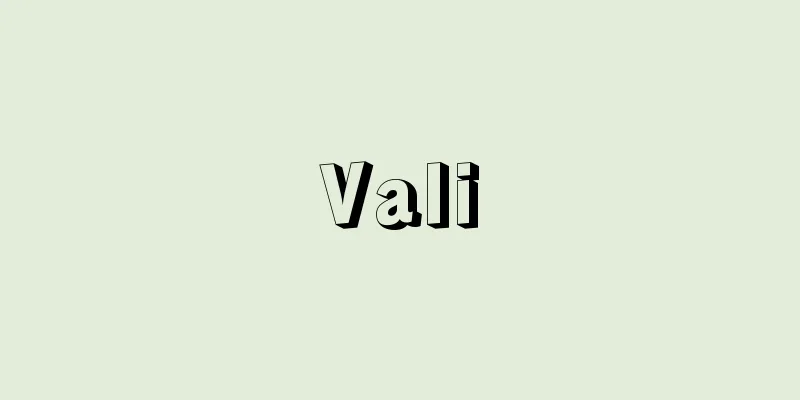Opening - Kaigo

〘noun〙[一] Opening and closing. ① To open and join again. To disassemble and combine. To open and then join again. ※Suga-ke Bunsou (around 900) 5th folding screen "The beauty of the blue and the blue is exquisite , opening and joining again east and west" [Mokusui-bun - Kaifu] ② A combination of contrasting things. Harmony. ※Gyokujin-sho (1563) 11 "In the chapters of the title, it says that the plum blossoms are the warriors of the previous era, and the five willows are the hearts of this country. It was a good combination at the time. It was said that the chapters and the spirit of opening and joining are good." [二] Pronunciation with a wide mouth opening and pronunciation with a narrow mouth opening. Open sounds and combined sounds. Open mouth (sound) and combined mouth (sound). ① The opposition in Chinese phonology between open mouth (pronunciation without rounded lip movement) and combined mouth (pronunciation with rounded lip movement). ※Inkyo Dokei Sho (1654), vol. 5 "There are two open sounds, also called two full open sounds. By simplifying the two , we can make the open sound one ." [Cut Rin Finger Palm Tu Examination Examples - Ben Doku Rin and Open Combine Rin Examples ] ② Originally a term used in Shomyo and Noh plays, it distinguishes between two types of long vowels in the O row (in Noh plays, the long vowels in the U row are also included in the "combined" category). From the Kamakura to Muromachi periods, the term refers to the lengthened sounds of the A row sound followed by U, such as au and kau ([-ɔː]), i.e., open sounds, and the lengthened sounds of the O row sound followed by U, such as ou and kou, and the E row sound followed by U, such as eu and keu, ([-oː]), i.e., combined sounds. In Christian romanization, the open sound is represented by "ǒ" and the combined sound by "ô" for the long vowels in the O row. (Nippo Jisho (1603-04)) ③ (derived from (2) ②) Generally means pronunciation or vocalization. (Nippo Jisho (1603-04))Ake-awa-su ...ahasu [Opening]Aki-Au ‥Afu [Opening]Source: The Selected Edition of the Japanese Language Dictionary About the Selected Edition of the Japanese Language Dictionary Information |
〘名〙[一] 開くことと閉じること。① 開いたり、また、合したりすること。分解したり、結合したりすること。開くようにして、また合うこと。※菅家文草(900頃)五・屏風「丹青知レ有レ巧、開合又西東」 〔木萃文‐海賦〕② 対照的なものの取り合わせ。調和。※玉塵抄(1563)一一「破題の章句に残梅は前代の士とあり〈略〉五柳は本朝心とあり。その時よいついなり。章句と開合の心がよいとさたあったぞ」[二] 口の開きの広い発音と狭い発音。開音と合音。開口(音)と合口(音)。① 中国音韻学でいう開口(円唇性の動きをもたない発音)と合口(円唇性の動きをもつ発音)との対立。※韻鏡道恵抄(1654)五「云二開音一者、又曰二全開音一。以簡二遂韻開合一」 〔切韻指掌図検例‐弁独韻与開合韻例〕② もと、声明(しょうみょう)、謡曲の用語で、オ列長音の二種を区別する名目(謡曲ではウ列長音も「合」に入れる)。鎌倉から室町にかけて、アウ・カウなどア段音にウが続いた音の長音化したもの([-ɔː])、すなわち、開音と、オウ・コウなどオ段音にウの続いた音およびエウ・ケウなどエ段音にウの続いた音の類が長音化したもの([-oː])、すなわち、合音とをいう。キリシタンのローマ字書きでは、オ列長音について、開音を「ǒ」、合音を「ô」で表わしている。〔日葡辞書(1603‐04)〕③ ((二)②から転じて) 一般的に、発音、発声の意。〔日葡辞書(1603‐04)〕
あけ‐あわ・す ‥あはす【開合】あき‐あ・う ‥あふ【開合】出典 精選版 日本国語大辞典精選版 日本国語大辞典について 情報 |
Recommend
Shale oil (English spelling) Shaleoil
…Oil shale, also known as oil shale or oil shale,...
Round rock - Round rock
…In addition to the diameter of the pebble, the r...
Pirani gauge (English spelling)
...The volume of the compressed gas is ax if the ...
Montegison [company] - Montegison
A representative Italian conglomerate. Montecatini...
Kaunitz, WA - Kaunitz
...From a world historical perspective, it was pa...
Oharada - Oharada
Takaichi District, Nara Prefecture Asuka Asuka Abo...
Travel pass - Oraiitegata
In the Edo period, common people had to carry a c...
Choi Seung-hee
A Korean female dancer. Born in Seoul. Graduated ...
Glee club
The name of a male choir. Glee is a genre of secul...
Intimidation - Threatening
It means "passing through the cords" an...
Chukchi language - Chukchigo (English spelling) Chukchee
It belongs to the Chukchi-Kamchatkan language fam...
Omagari [city] - Omagari
An old city in the northwest of the Yokote Basin i...
audible range (English)
…For example, the number of hair cells in cattail...
Meritocracy - Meritocracy
Achievement, as a sociological term, is the opposi...
Emanation
The historical name of radon Rn. In 1899-1900, E....









